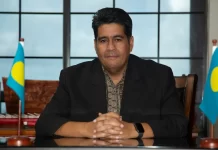The U.S will provide US$1 billion to the UN’s flagship climate fund – its first such contribution in six years.
Joe Biden made the commitment as he hosted a virtual meeting of world leaders last Thursday to spur high-level leadership to limit global warming to 1.5C.
This is the first time since 2017 the U.S has pledged cash to the Green Climate Fund (GCF), which supports developing countries to cut emissions and adapt to climate impacts.
The move was part of a broad call to action to the Major Economies Forum on energy and climate, a group of more than 20 high-emitting developed and developing countries which account for around 80% of global greenhouse gases.
Biden promised to ask Congress to approve an additional US$500m over five years for the Amazon Fund to end deforestation by 2030.
He pledged to raise US$200m from public, private and philanthropy sources for cutting methane emissions in developing countries and urged nations to scale up carbon capture and removal technologies.
The U.S president called on leaders to join a collective pledge for half of all car sales and at least 30% of medium and heavy-duty vehicles to be zero emissions by 2030.
“It’s a really big deal,” Joe Thwaites, a climate finance campaigner at the Natural Resources Defense Council, told Climate Home News of Biden’s pledge to the GCF.
“Over the last few years, the fund has been right up against the limits of its resources. It has been approving money to projects as soon as it is receiving it from donors and has had to hold back projects because of a lack of money,” Thwaites explained.
“This US$1bn is significant because it will allow the GCF to unlock more money for communities in need,” he added.
The move, he said, will boost US credibility at the fund, after its ability to provide climate finance had been put into doubt.
However, as the GCF is calling on countries for a third round of funding pledges to replenish the fund, the U.S is yet to deliver on its first commitment.
The US$1bn announcement only accounts for half of the US$2bn the U.S owes the fund after Donald Trump reneged on a US$3bn pledge made under Barack Obama almost a decade ago. Since then, European and other donors have doubled their pledges to the fund.
“The question is: can the U.S clear another billion dollars and finally deliver on the pledge?” Thwaites said. Other donor countries will closely watch what the U.S will bring to a GCF pledging conference in October, he added.
The leaders’ meeting was framed by the findings of a report by the International Energy Agency which outlined steps to take to keep the 1.5C goal within reach.
It highlights four key pillars: decarbonising the energy sector, ending deforestation, tackling non-CO2 emissions such as methane, and accelerating the deployment of carbon capture and storage and removal technologies.
Alden Meyer, senior associate at think tank E3G, told Climate Home that the U.S was seeking to create more coalitions of the willing to advance action in key sectors – a model which has proved successful in galvanising support to cut methane emissions under the Methane Pledge.
“There are some good pieces,” said Meyer, “but it’s not comprehensive,” citing the lack of initiatives to decarbonise the energy sector.
That’s a gap the EU intends to fill. EU Commission president Ursula von der Leyen proposed to launch an initiative for setting global targets for energy efficiency and renewable energy by Cop28. “These targets would complement other goals,” she said.
Biden called on countries to speed up the deployment of carbon capture and removal technologies by joining the ‘Carbon Management Challenge’.
This includes capturing carbon from specific polluting plants or directly from the atmosphere and storing it in geological formations, in the oceans or in products.
The White House said the initiative will develop a suite of announcements and goals that will be unveiled at Cop28.
Meyer said U.S officials are considering setting a collective target for the amount of carbon being stored annually. The EU Commission has already proposed a binding target for the union to store 50 million tonnes of CO2 per year by 2030.
Scientists say carbon capture and removal technologies are needed to limit global warming to 1.5C by counter-balancing residual emissions from hard-to-abate sectors. How much of it is needed depends on how quickly countries reduce emissions and reach net zero.
The IEA estimates that projects are needed to capture around 1.2 billion tonnes of CO2 by 2030 to meet global climate goals – a 30 fold increase on 2021 levels.
However, such technologies remain underdeveloped and face technological, economic and environmental barriers. There’s also uncertainty on the risks of deploying carbon dioxide removal at large scale.
Campaigners have warned that focusing on techno-fixes risks distracting from pressing carbon-cutting action and impede the transition to clean energy sources.
Steven Feit, a senior attorney at the Center for International Environmental Law, told Climate Home it was “very concerning” that carbon capture was increasingly being used “to justify the construction and expansion of the fossil economy” ahead of Cop28 hosted by oil and gas producer UAE.
Feit cited a major scientific report showing that carbon capture was one of the most expensive technologies with little mitigation potential.
SOURCE: CLIMATE HOME/PACNEWS














